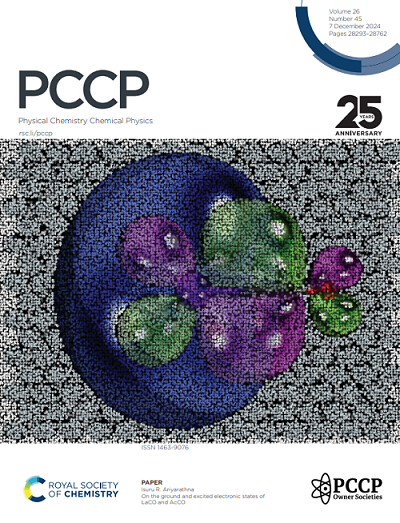In-depth electronic behavior of pentagraphene and pentagonal-silicene sheets for DNA nucleic-base detection: implications for genetic biomarker sensing
IF 2.9
3区 化学
Q3 CHEMISTRY, PHYSICAL
引用次数: 0
Abstract
Silicon-based chemical sensors are optimal for detecting biological entities, because of their fast biocompatible, non-invasive nature. Going beyond the hexagons in this paper we propose pristine, and metal [Gold (Au) and Tungsten (W)] atoms doped pentagonal silicene (p-Si) and pentagraphene (PG) based single DNA nucleic base sensors. Using first-principles calculations, we present a comparative study of DNA nucleic bases namely Adenine (A), Guanine (G), Cytosine (C), and Thymine (T) adsorbed on pristine and metal-doped PG and p-Si, to determine their potential as nucleic base detectors or other chemical species. The calculated binding affinity on PG and p-Si surface by M062X/6-31G* level of theory and adsorption energies by DFT predicts that PG has higher sensitivity towards DNA nucleic bases compared to p-Si with evident changes in their work function and band structure properties. In the later part, we show that the doping of Au and W has significantly enhanced the sensitivity of PG and p-Si towards the DNA nucleic bases which is also evident in their electronic band structures and PDOS calculations. The significant changes in the electronic properties of PG and p-Si with adsorbed nucleobases make it a promising candidate for rapid sensing, sequencing, and identification of DNA nucleic base elements. This study provides new insights into the physical and chemical interactions between biomolecules and PG/p-Si, highlighting its potential as a template for nanobiological devices. Both Au and W doping enhance the adsorption properties, suggesting that PG and p-Si could be effectively used for biomolecule sensing applications.求助全文
约1分钟内获得全文
求助全文
来源期刊

Physical Chemistry Chemical Physics
化学-物理:原子、分子和化学物理
CiteScore
5.50
自引率
9.10%
发文量
2675
审稿时长
2.0 months
期刊介绍:
Physical Chemistry Chemical Physics (PCCP) is an international journal co-owned by 19 physical chemistry and physics societies from around the world. This journal publishes original, cutting-edge research in physical chemistry, chemical physics and biophysical chemistry. To be suitable for publication in PCCP, articles must include significant innovation and/or insight into physical chemistry; this is the most important criterion that reviewers and Editors will judge against when evaluating submissions.
The journal has a broad scope and welcomes contributions spanning experiment, theory, computation and data science. Topical coverage includes spectroscopy, dynamics, kinetics, statistical mechanics, thermodynamics, electrochemistry, catalysis, surface science, quantum mechanics, quantum computing and machine learning. Interdisciplinary research areas such as polymers and soft matter, materials, nanoscience, energy, surfaces/interfaces, and biophysical chemistry are welcomed if they demonstrate significant innovation and/or insight into physical chemistry. Joined experimental/theoretical studies are particularly appreciated when complementary and based on up-to-date approaches.
 求助内容:
求助内容: 应助结果提醒方式:
应助结果提醒方式:


